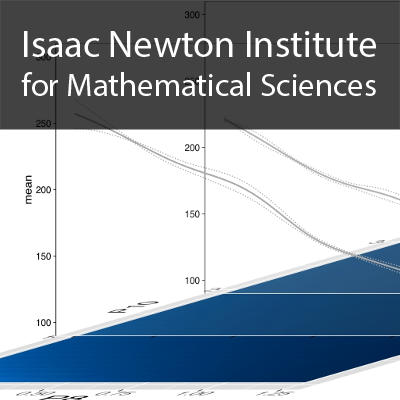Modelling discontinuities in simulator output using Voronoi tessellations
1 hour 2 mins,
238.75 MB,
iPod Video
480x270,
29.97 fps,
44100 Hz,
525.75 kbits/sec
Share this media item:
Embed this media item:
Embed this media item:
About this item

| Description: |
Gosling, J
Tuesday 6th February 2018 - 13:30 to 14:30 |
|---|
| Created: | 2018-02-07 14:27 |
|---|---|
| Collection: | Uncertainty quantification for complex systems: theory and methodologies |
| Publisher: | Isaac Newton Institute |
| Copyright: | Gosling, J |
| Language: | eng (English) |
| Distribution: |
World
|
| Explicit content: | No |
| Aspect Ratio: | 16:9 |
| Screencast: | No |
| Bumper: | UCS Default |
| Trailer: | UCS Default |
| Abstract: | Co-authors: Chris Pope (University of Leeds), Jill Johnson (University of Leeds), Stuart Barber (University of Leeds), Paul Blackwell (University of Sheffield)
Computationally expensive, complex computer programs are often used to model and predict real-world phenomena. The standard Gaussian process model has a drawback in that the computer code output is assumed to be homogeneous over the input space. Computer codes can behave very differently in various regions of the input space. Here, we introduce a piecewise Gaussian process model to deal with this problem where the input space is divided into separate regions using Voronoi tessellations (also known as Dirichlet tessellations, Thiessen polygons or the dual of the Delaunay triangulation). We demonstrate our method’s utility with an application in climate science. |
|---|---|
Available Formats
| Format | Quality | Bitrate | Size | |||
|---|---|---|---|---|---|---|
| MPEG-4 Video | 640x360 | 1.95 Mbits/sec | 907.05 MB | View | Download | |
| WebM | 640x360 | 588.46 kbits/sec | 267.22 MB | View | Download | |
| iPod Video * | 480x270 | 525.75 kbits/sec | 238.75 MB | View | Download | |
| MP3 | 44100 Hz | 251.63 kbits/sec | 114.27 MB | Listen | Download | |
| Auto | (Allows browser to choose a format it supports) | |||||

